Parallels 10 upgrade?
Published 23 August 2014.
Parallels 10 was announced earlier this week. I’ve been a user of Parallels for a number of years now primarily as its had the edge over VMWare for graphically intensive applications. Since becoming a Mac user I’ve transitioned most of my work tools and pipelines across to OSX but there are still a few proprietary tools and a handful of applications I still rely on Windows for.
Upgrades to Parallels tend to roll round every year, usually aligned with upgrades in Mac OSX and tend be be priced at around $50. In the past I usually just upgraded without considering the value proposition. However, since Parallels 9 reached a level of integration and performance where it wasn’t causing me any issues or detracting from the experience of using a VM, I wanted to consider the benefit of spending another $50 blindly this year.
Parallels make the following claims of v10:-
- Open Windows documents 48% faster
- Improved performance - up to 50% faster and 30% longer battery life
- Disk space wizard - real time optimisation.
- 1 click optimisation - automatically set your VM for optimal settings based on what you do most.
- 10% Reduced memory consumption.
I downloaded the v10 demo from here. My Macbook is a mid 2013 Retina 15” 2.3Ghz i7 with 16GB RAM, 512GB SSD, Geforce GT 750M GPU and runs Mavericks 10.9.4. It drives two 2560x1440 monitors, a 1080p TV and the laptop display at 2880x1800 so its pushing a lot of pixels already.
I duplicated my Windows 8.1 image to create a dedicated VM for parallels 10.
I setup Parallels 10 to mirror my Parallels 9 settings, i.e 8 CPUs and 4GB RAM allocated.
I then ran a suite of popular benchmarks which attempt to replicate real world performance and give a comparison between my VM running under parallels v9 and v10.
PC Mark 7
Futuremark’s PC Mark 7 provides Windows 7 and 8 benchmarking functionality using tests representative of a typical home users workload. Results show marginal improvements across the board with the exception of 10% improvement in raw system storage tests. Drilling down into the test data this result was affected predominantly by the application loading performance suporting the claims of reduced loading times in parallels 10.
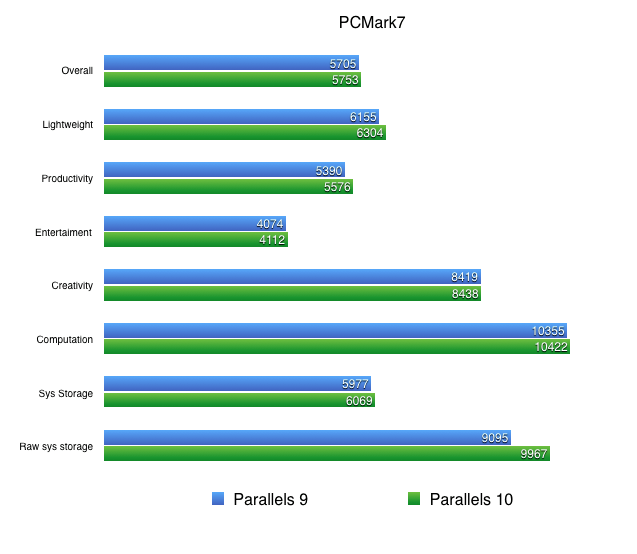
Geekbench 3
Primate Labs cross platform benchmark that separates single and multi threaded performance which attempt to simulate real-world scenarios shows a 1% decrease in performance of single threaded results offset by a 2-3% increase in multi-threaded tests.
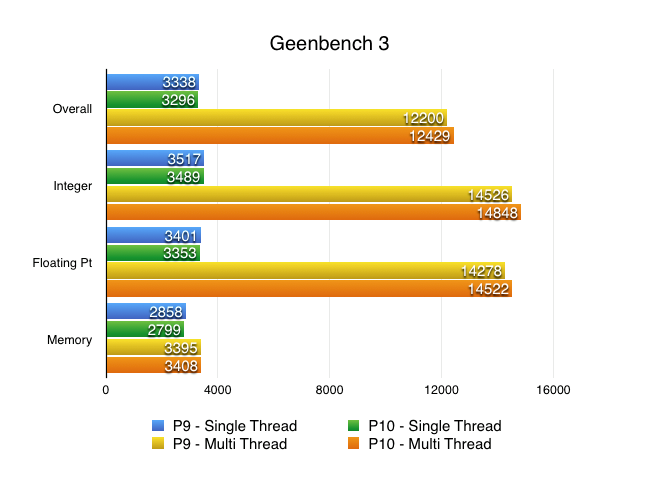
3D Mark 06
Parallels continues to show progress in rendering performance tests showing an overall 10% increase in 3D Mark 06.
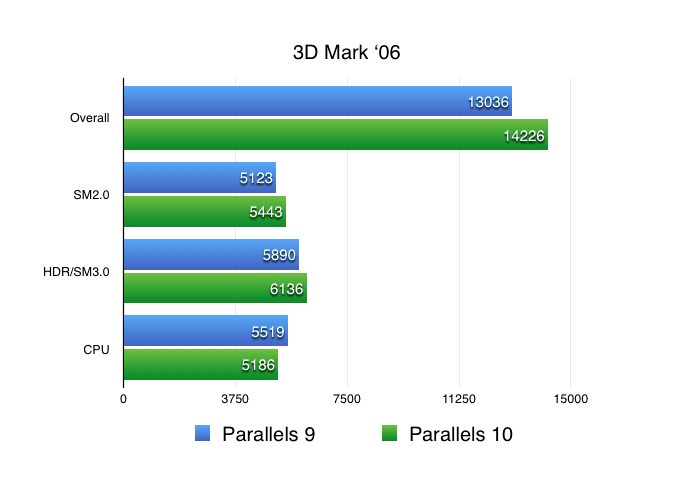
Cinebench R15
Benchmark which renders complex 3d scenes which measures graphics performance in OpenGL mode. No noticeable change in overall performance.
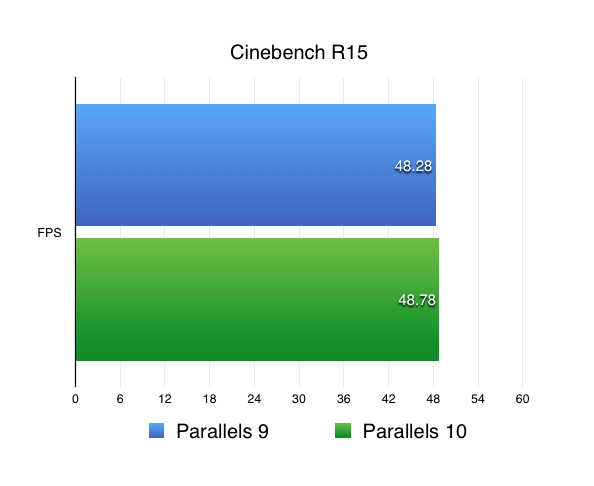
Application loading times
One of Parallels 10 biggest claims is a reduction in application loading time by up to 50%. Parallels 10 feels snappy, possibly slightly more responsive than v9 but its of little impact considering v9 is no slouch either. To put reduced loading times into perspective, on my machine, Excel loads from SSD in something like one second, even less if cached. A 50% reduction, or half a second, isn’t going to make any real difference to my work.
Audio conversion
Outside of these benchmark programs, I wanted to quantify how much the Parallels 10 optimisations would make to an audio conversion process I regularly use would be. I expected this would be a good test as it requires lots of disk I/O and CPU load spread across all 8 cores. I created a test to convert a 5.5GB library consisting of 152 FLAC files into ALE.
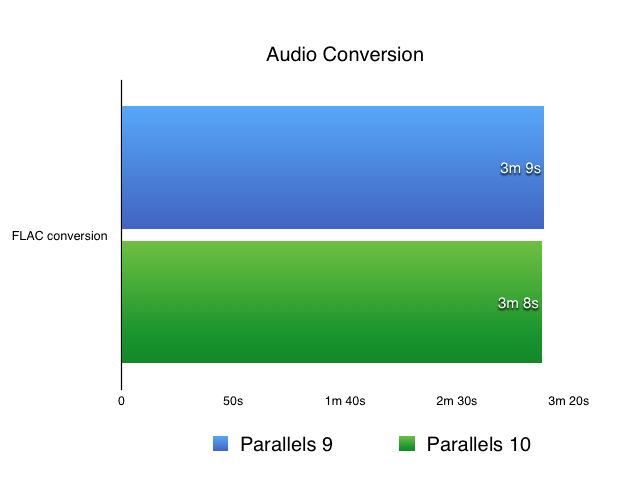
Battery usage
I haven’t attempted to verify the prolonged battery life claims made of v10 because its a non issue for me, I rarely work away from a power source. I may run some follow up tests over the next few days to satisfy my curiosity.
Summary
For me and my regular Windows VM usage, the performance offered through the earlier versions of Parallels was already good enough to be a non issue. The improvements to loading times and performance highlighted through the above benchmarking don’t entirely justify the need for me to spend another $50. I’ll revisit this decision in a couple of months when I can evaluate if the tighter integration with Apple’s new Yosemite OS is a good enough reason to upgrade.
In the meantime for those people who like to game in a VM, the performance improvements might just be enough to make your favourite game now playable in a VM rather than having to reboot into Windows via Bootcamp.
Links
OCW are currently offering OEM licences at $39 here.
Download Futuremark’s 3DMark and PCMark here.
Download Cinebench R15 here.
Download Geekbench here.